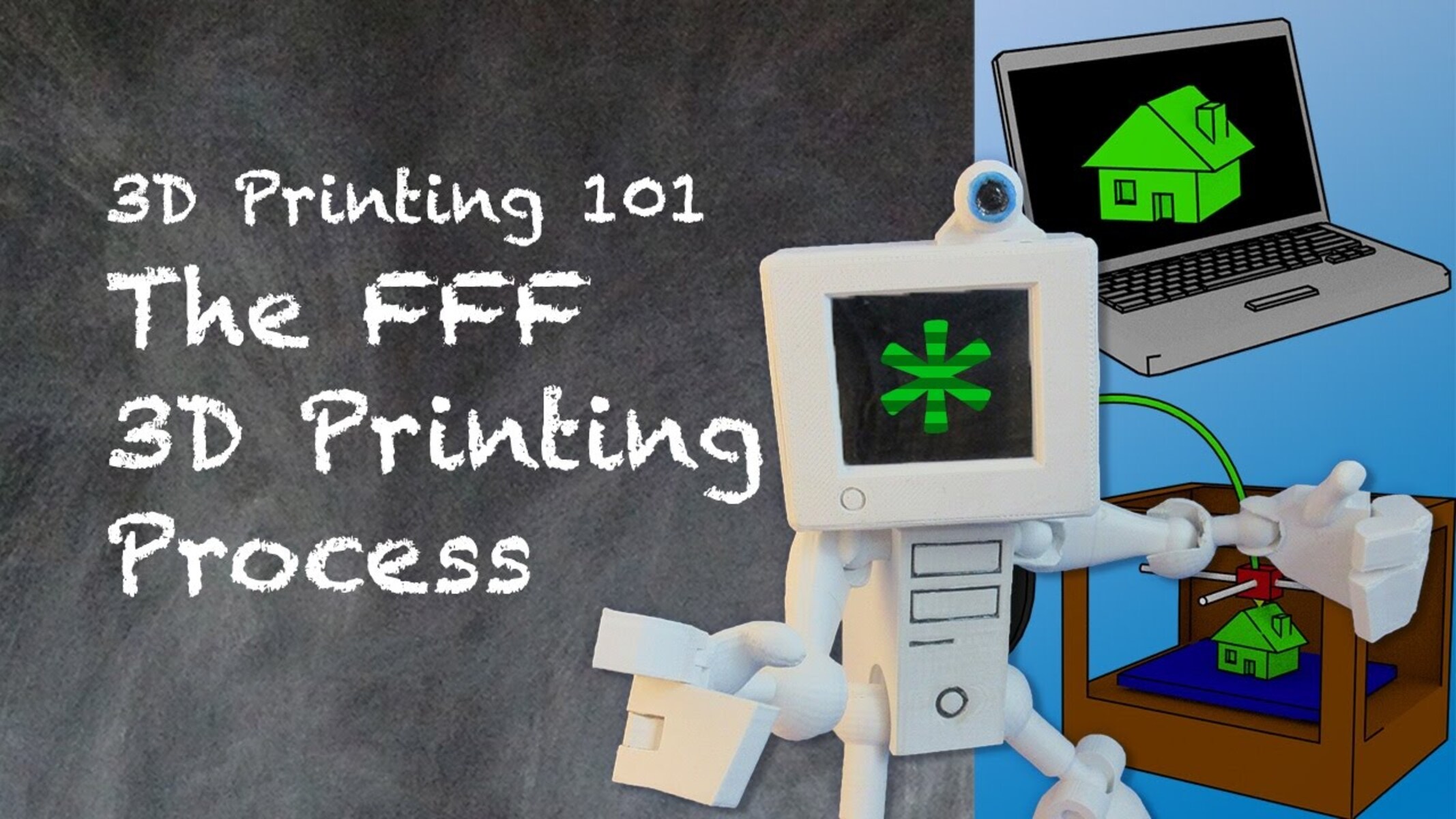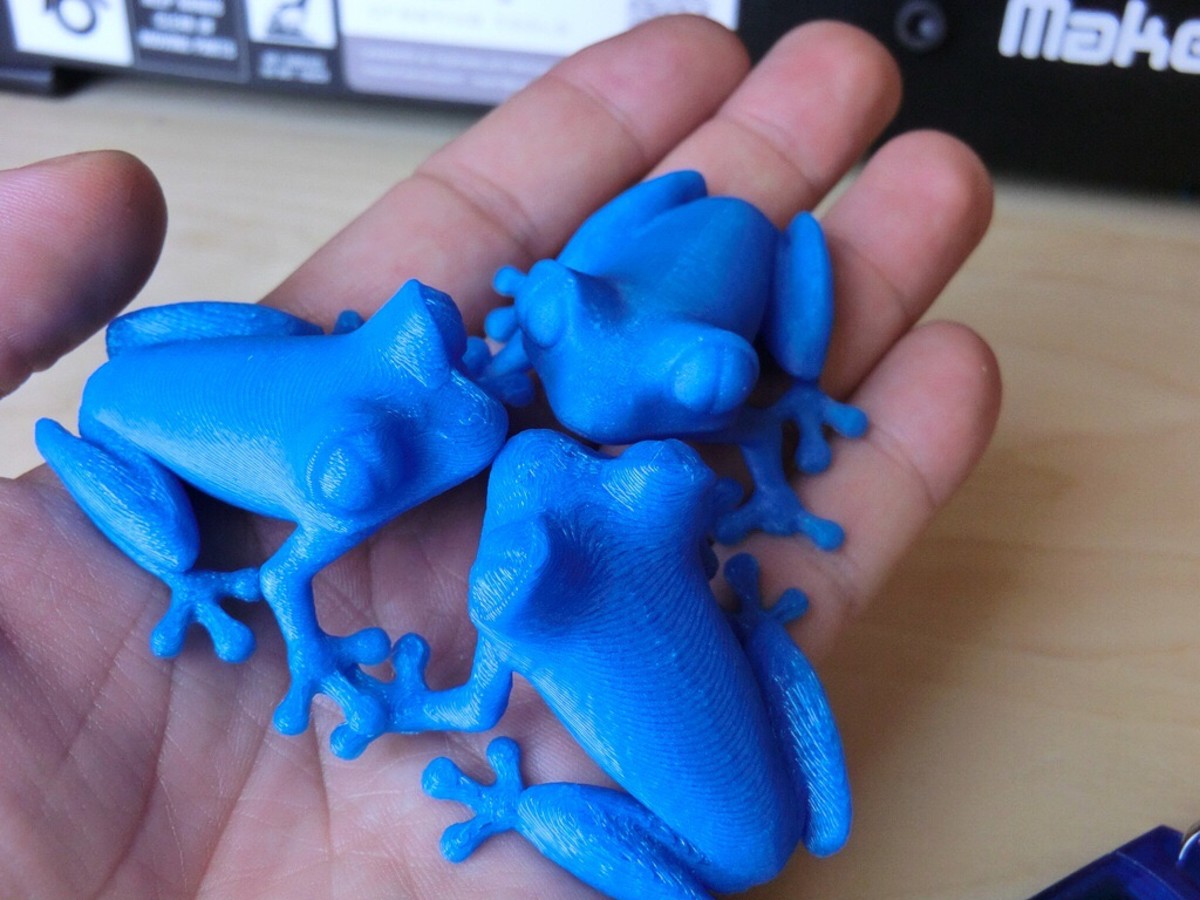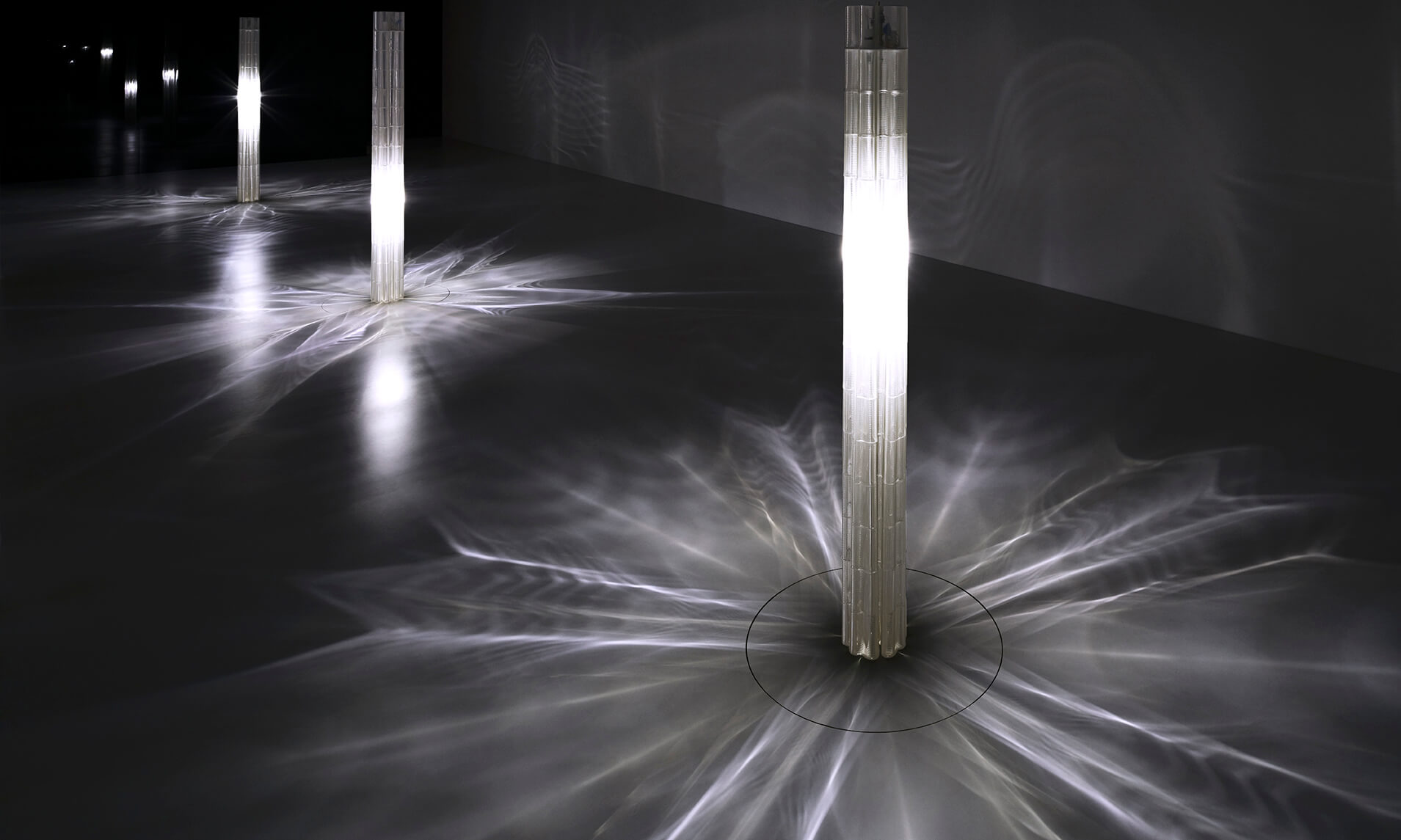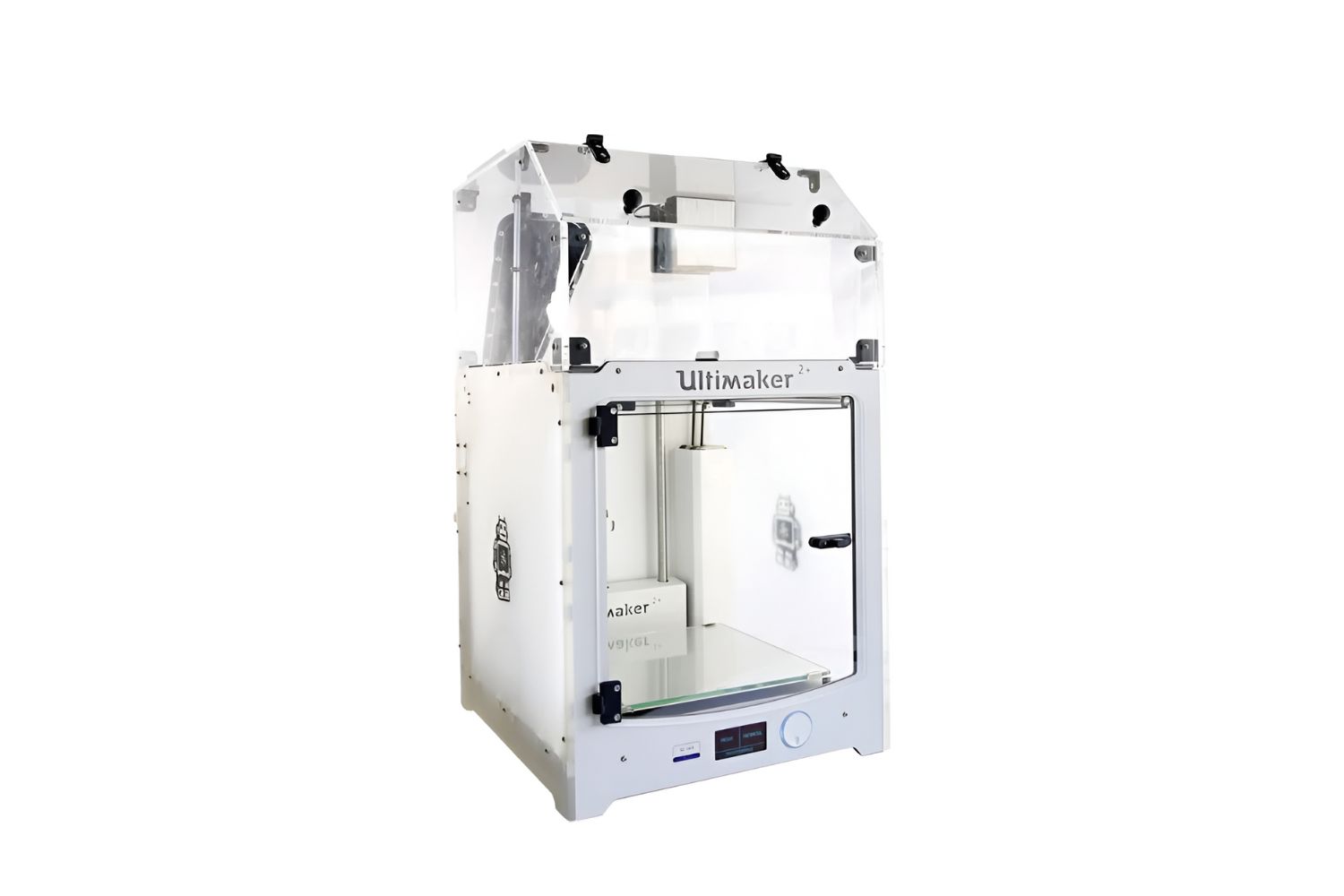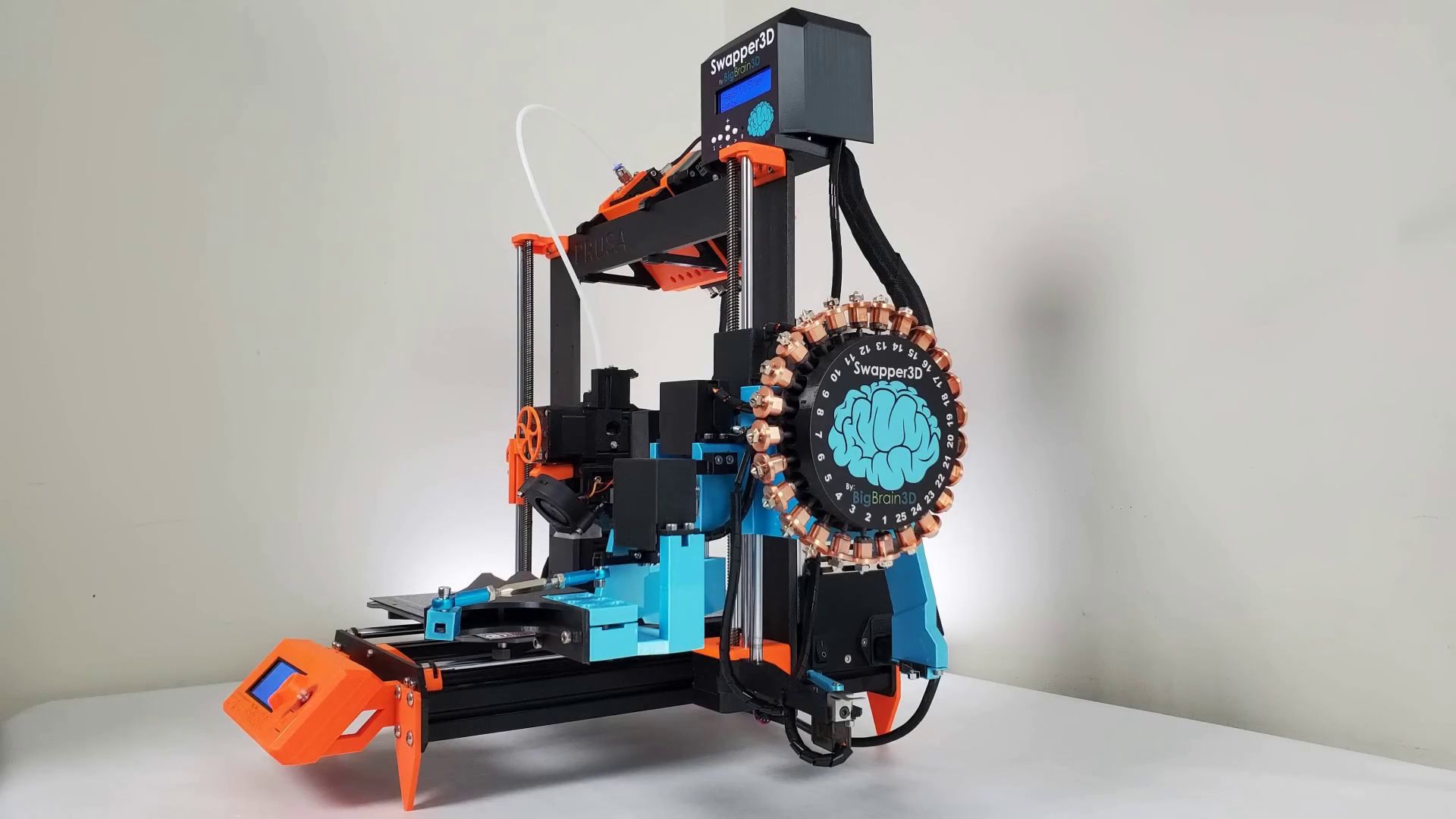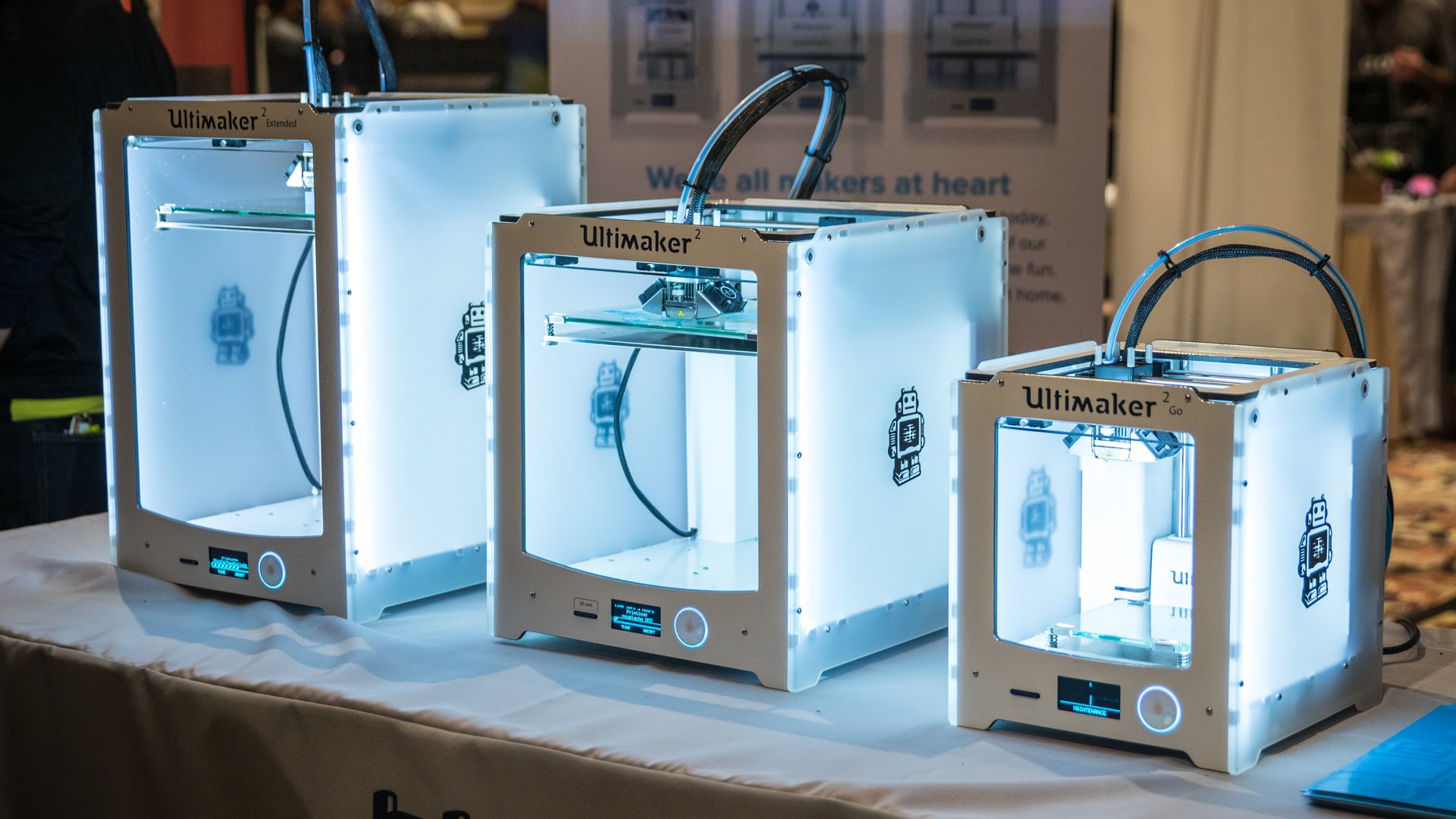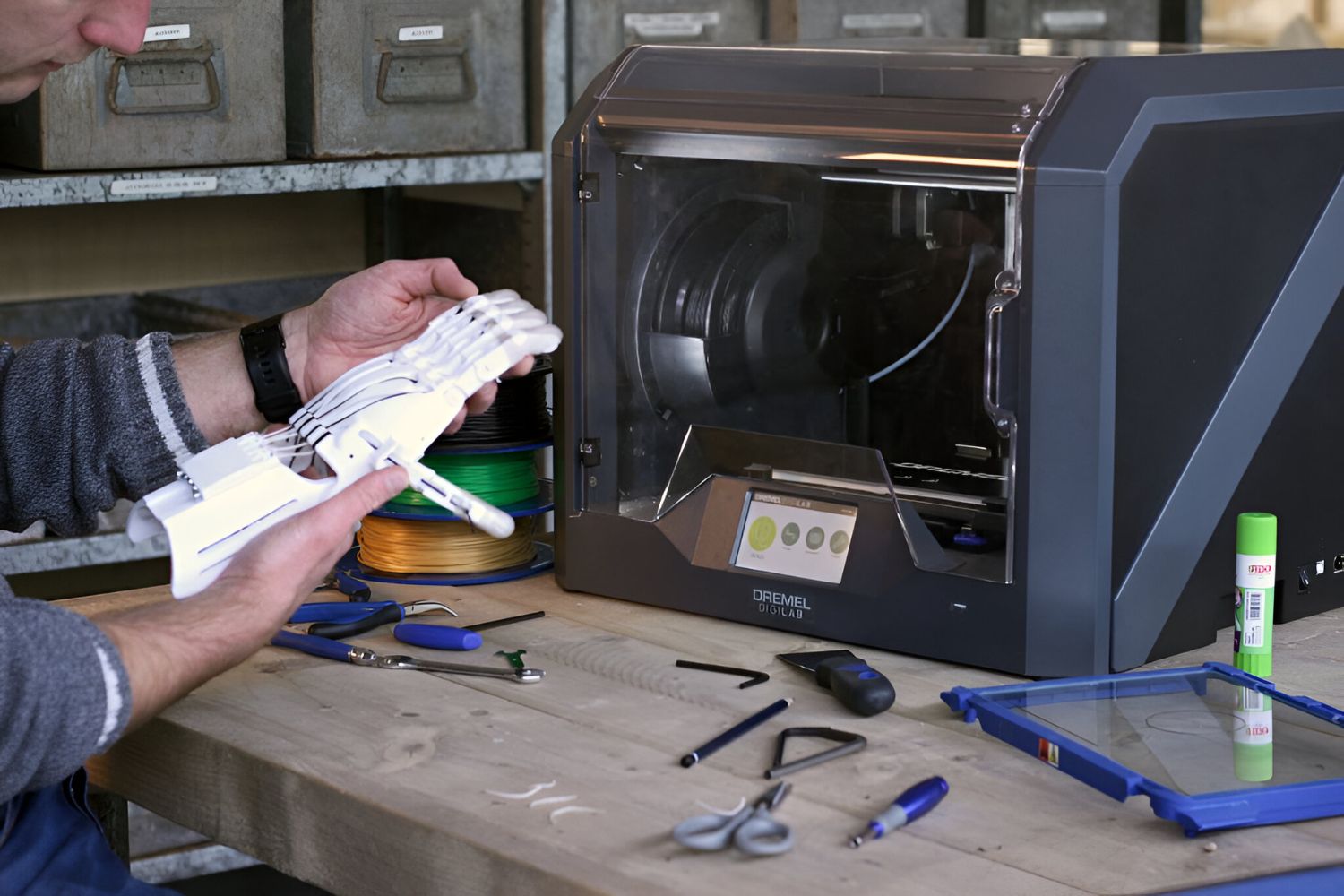Introduction
Welcome to the fascinating world of 3D printing, where objects are brought to life through advanced technology and precise layering. Among the various techniques used in 3D printing, one acronym that frequently pops up is FFF. But what exactly does FFF mean in the context of 3D printing? In this article, we’ll dive into the depths of FFF and explore its meaning, applications, benefits, and limitations within the realm of 3D printing.
FFF, which stands for Fused Filament Fabrication, is one of the most popular and widely used 3D printing methods. It is often used interchangeably with another term called FDM (Fused Deposition Modeling). Both terms refer to the same process wherein a thermoplastic filament, typically made of materials like ABS or PLA, is melted and deposited layer-by-layer to create a three-dimensional object. FFF technology has gained immense popularity due to its versatility, affordability, and ease of use.
3D printing has revolutionized the manufacturing and prototyping industries by enabling the creation of complex geometries and customized designs that are not easily achievable through traditional manufacturing methods. From producing intricate architectural models to designing functional prototypes for various industries, FFF has proven to be a game-changer. It has opened up endless possibilities for innovation and creativity, allowing individuals and businesses to turn their ideas into tangible objects with relative ease.
In the upcoming sections, we will explore the inner workings of FFF technology, its advantages and disadvantages, as well as how it compares to other 3D printing technologies. We will also delve into the common materials used in FFF printing and provide you with some valuable tips and best practices to maximize your 3D printing experience. So, if you’re curious about FFF and its role in the world of 3D printing, keep reading to unravel the wonders of this incredible technology.
Understanding the Basics
Before we delve into the nitty-gritty details of FFF technology, let’s first understand the basic principles behind 3D printing. At its core, 3D printing is an additive manufacturing process that builds objects layer by layer, as opposed to subtractive manufacturing methods that involve cutting or drilling materials to obtain the desired shape. This fundamental difference allows for greater design freedom and the creation of intricate structures with minimal waste.
FFF, or Fused Filament Fabrication, follows this additive manufacturing approach. It utilizes a 3D printer that consists of three main components: the printer itself, the filament, and a heated extrusion nozzle. The filament, usually made of thermoplastic materials, is loaded into the printer, where it is fed through the nozzle. The nozzle heats up the filament, melting it into a semi-liquid state, which can then be precisely deposited onto the print bed.
To control the movement and deposition of the melted filament, the printer reads a digital 3D model file that serves as the blueprint for the object to be printed. The model is sliced into multiple layers, and the printer follows the instructions layer by layer, depositing the melted filament in a predetermined pattern. As each layer cools down and solidifies, the next layer is added on top, gradually building up the final 3D object.
One of the crucial aspects of FFF printing is the concept of support structures. Since objects are built layer by layer, overhanging features or intricate designs may require additional support during the printing process to prevent deformation or collapse. These support structures, usually made of the same filament material, are generated automatically by the slicing software based on the model’s geometry. After the printing is complete, these support structures can be removed to reveal the final object.
It’s important to note that FFF printing is not limited to a single filament material. In fact, there is a wide range of thermoplastic materials available for FFF printers, each with its own unique properties and characteristics. From standard PLA and ABS to more advanced materials like nylon and carbon fiber-infused filaments, the choice of filament can greatly impact the strength, flexibility, and overall quality of the printed object.
Now that we have a basic understanding of FFF technology, let’s explore the advantages, disadvantages, and applications of this versatile 3D printing method. By the end of this article, you’ll have a comprehensive knowledge of FFF and its role in the world of additive manufacturing.
The Acronym Defined: FFF
FFF, shorthand for Fused Filament Fabrication, is a 3D printing technology that falls under the umbrella of additive manufacturing. This term is often used interchangeably with FDM (Fused Deposition Modeling), which essentially refers to the same process. FFF/FDM technology involves the layer-by-layer deposition of a melted thermoplastic filament to build three-dimensional objects. Let’s break down the acronym and understand its key components:
Fused: Fused refers to the process of melting the thermoplastic filament. The filament is heated and brought to its melting point, transforming it into a flexible, semi-liquid state that can be easily manipulated and deposited.
Filament: In FFF printing, the filament is the raw material used to create the object. The filament is typically made of plastics such as PLA (Polylactic Acid) or ABS (Acrylonitrile Butadiene Styrene), although other materials like PETG, TPU, or nylon can also be used. Filaments come in various colors and diameters, allowing for customization and versatility in the printing process.
Fabrication: The term fabrication refers to the act of creating or constructing something. In the context of FFF, fabrication refers to the layered building process of the 3D object. The melted filament is precisely deposited layer by layer, gradually forming the desired shape and structure.
The FFF technology brings numerous advantages to the world of 3D printing. Its simplicity, affordability, and accessibility have played a significant role in its widespread adoption. FFF printers are relatively easy to set up and operate, making them suitable for both beginners and professionals alike.
The choice of filament materials is extensive, allowing users to experiment with different physical properties and aesthetics. From strong and durable ABS for functional prototypes to eco-friendly and biodegradable PLA for artistic creations, FFF provides a wide range of options to suit various printing needs.
However, it is important to note that FFF does have its limitations. The printed objects may not have the same level of precision and detail as those produced by more advanced 3D printing technologies like SLA or SLS. Layer lines are often visible on the final print, and the printing process itself can be relatively slow compared to other methods.
Despite these limitations, FFF technology continues to drive innovation and empower individuals and businesses to bring their ideas to life. Its versatility, coupled with the constant advancements in filament materials and printer capabilities, ensures that FFF remains a vital and accessible tool in the world of 3D printing.
How Does FFF Work?
FFF, or Fused Filament Fabrication, is a 3D printing technology that operates on a relatively simple principle. The process begins by creating a digital 3D model of the object to be printed using computer-aided design (CAD) software. This digital model serves as the blueprint for the physical object that will be created.
Once the digital model is prepared, it is sliced into multiple layers using slicing software. Each layer represents a thin cross-section of the final object. These layers are then translated into instructions that the 3D printer can understand and execute.
The next step involves preparing the printer for the printing process. This includes loading the printer with the desired filament material, which is typically in the form of a spool. The filament is fed into the printer and guided through a heated extrusion nozzle, also known as a hot end. The hot end heats up the filament, melting it into a semi-liquid state.
As the printing process begins, the printer moves along the X, Y, and Z axes, guided by the instructions from the sliced layers. The nozzle deposits the molten filament onto the print bed or the previously printed layers, starting from the bottom-up. The filament solidifies rapidly upon contact with the cooler surface and the ambient air, creating a solid layer.
The printer continues to deposit one layer at a time, gradually building up the object’s shape and structure. Each layer adheres to the previous layer, creating a strong bond. The precise movement and deposition of the filament are crucial to ensure the accuracy and quality of the printed object. The printer’s positioning system plays a vital role in achieving the desired level of detail and precision.
In addition to the primary structure, support structures may also be generated in the printing process. These support structures provide temporary support for overhanging or complex features of the object during printing. They are typically made from the same filament material and can be removed once the printing is complete. The removal process may involve cutting or snapping off the support structures, leaving the final object intact.
The speed and quality of the printing process can be influenced by various factors, including the filament type, nozzle diameter, layer height, and printer settings. Balancing these factors is crucial to achieve the desired result. Additionally, post-processing steps such as sanding, painting, or polishing can be employed to enhance the appearance and finish of the printed object.
FFF technology has opened up a world of creativity and possibilities. Its simplicity, combined with the wide range of available filament materials, allows users to transform their ideas into physical objects. From prototypes and functional parts to artistic creations and customized designs, FFF offers a versatile and accessible solution for bringing imagination to life.
Benefits and Advantages of FFF
FFF, or Fused Filament Fabrication, is a 3D printing technology that offers several notable benefits and advantages. These advantages have contributed to the widespread adoption and popularity of FFF in various industries and applications. Let’s explore some of the key benefits of FFF technology.
1. Versatility: FFF technology provides a versatile platform for 3D printing. It supports a wide range of filament materials, including basic plastics like PLA and ABS, as well as more advanced materials like PETG, nylon, and even flexible materials such as TPU. This versatility allows for the production of objects with varying properties such as strength, flexibility, and heat resistance.
2. Affordability: FFF printers are generally more affordable compared to other 3D printing technologies like SLA or SLS. The cost of entry-level FFF printers has significantly decreased over the years, making them more accessible to individuals, hobbyists, and small businesses. In addition, the filament materials used in FFF printing are relatively inexpensive, allowing for cost-effective production of prototypes and small-scale manufacturing.
3. Ease of Use: FFF printers are user-friendly and easy to set up and operate, making them suitable for beginners. The slicing software that prepares the digital model for printing is often intuitive and straightforward, even for those with limited technical knowledge. With proper calibration and a basic understanding of the printing process, users can achieve consistent and reliable results.
4. Design Freedom: FFF technology offers great design freedom and customization options. Since objects are built layer by layer, complex geometries, intricate designs, and internal structures can be created with ease. FFF allows for the production of highly customized and unique objects that may not be feasible with traditional manufacturing methods.
5. Prototyping and Iteration: FFF technology is widely used for rapid prototyping and iterative design processes. It allows designers and engineers to quickly create physical prototypes to test form, fit, and function. The ability to iterate and refine designs rapidly enables faster product development cycles and reduces time-to-market for new products.
6. Accessibility for Education: FFF printers are popular in educational settings, from K-12 schools to universities. Their affordability and ease of use make them ideal tools for introducing students to the principles of 3D printing and promoting hands-on learning. Students can bring their ideas to life and gain valuable experience in design thinking, problem-solving, and digital fabrication.
Overall, FFF technology offers a range of benefits and advantages that make it a go-to choice for many 3D printing applications. Its versatility, affordability, and ease of use, combined with the ability to produce functional prototypes and customized designs, have solidified FFF’s place as a powerful tool in the world of additive manufacturing.
Limitations of FFF
While Fused Filament Fabrication (FFF) is a versatile and widely used 3D printing technology, it is not without its limitations. Understanding these limitations is important to ensure realistic expectations and informed decision-making when considering FFF for a specific application. Let’s explore some of the key limitations of FFF technology.
1. Resolution and Surface Finish: FFF is not well-suited for applications that require high levels of detail and smooth surface finishes. The layer-by-layer deposition process can result in visible layer lines on the printed object. While the resolution of FFF printers has improved over the years, it is still relatively lower compared to technologies like SLA (Stereolithography) or SLS (Selective Laser Sintering) that can achieve finer details and smoother finishes.
2. Print Speed: Depending on the complexity and size of the object, FFF printing can be relatively slow. Each layer of the object needs to be deposited and cooled before the next layer can be added. Additionally, printing with higher layer heights can increase print speed but sacrifices detail and surface quality. This slower print speed may not be suitable for applications that require quick turnaround times or high-volume production.
3. Support Structures: Overhanging or complex features often require the use of support structures during FFF printing. These structures help prevent sagging or collapsing of printed layers. While they serve their purpose, support structures can be challenging to remove and may leave behind marks or require additional post-processing steps to achieve the desired finish. Designing objects to minimize the need for support structures can help mitigate this limitation.
4. Material Limitations: While FFF printers offer a variety of filament material options, not all materials are suitable for every application. Each material has its own set of properties and characteristics, which may limit its usability in certain scenarios. For example, materials like PLA may not be suitable for high-temperature applications, and flexible filaments may have limitations in terms of printability and durability. It is essential to choose the right material for the desired application to ensure optimal performance.
5. Dimensional Accuracy: FFF printing is subject to dimensional inaccuracies, particularly in the Z-axis. Factors like temperature fluctuations, filament shrinkage, and minor variations in printer calibration can affect the final dimensions of the printed object. These dimensional inaccuracies may be acceptable for certain applications but can pose challenges when precision is critical.
While these limitations of FFF technology should be taken into account, it is important to note that advancements in the field continue to address many of these challenges. Research and development efforts focus on improving resolution, surface quality, print speed, and material options. As the technology evolves, the limitations of FFF printing are gradually being overcome, expanding its potential applications in various industries.
FFF Compared to Other 3D Printing Technologies
Fused Filament Fabrication (FFF), also known as FDM (Fused Deposition Modeling), is just one of several 3D printing technologies available today. Each technology has its own strengths and limitations, making them suitable for different applications and industries. Let’s compare FFF with some other commonly used 3D printing technologies to understand their differences.
1. SLA (Stereolithography): SLA uses a vat of liquid resin that is cured by a laser or UV light to create the object. Compared to FFF, SLA offers higher resolution and smoother surface finishes, making it excellent for producing detailed and intricate objects. However, SLA is more expensive, has limited material options, and requires post-processing to remove uncured resin and strengthen the printed parts.
2. SLS (Selective Laser Sintering): SLS utilizes a laser to selectively fuse powdered material, typically nylon, into solid objects. It offers the advantage of not requiring support structures and has excellent mechanical properties. SLS is suitable for producing functional prototypes, end-use parts, and complex geometries. However, it is more expensive than FFF, requires specialized equipment, and has limited material selection.
3. DMLS (Direct Metal Laser Sintering): DMLS is similar to SLS but works with metal powders instead of plastics. It is an additive manufacturing technology used to create fully dense metal parts with excellent mechanical properties. DMLS is primarily used in industrial applications, such as aerospace and automotive industries, where precision, strength, and durability are paramount. However, DMLS equipment is costly, and the range of available metal materials is somewhat limited.
4. PolyJet: PolyJet uses inkjet-style technology to deposit liquid photopolymer resins that are then cured with UV light. It offers high-resolution prints with smooth surfaces and can produce objects with multiple materials and colors simultaneously. PolyJet is often used for creating realistic prototypes and detailed models. However, the cost of PolyJet printers and materials is higher compared to FFF, and it may require more post-processing steps.
It’s important to consider the specific requirements of your project when choosing the appropriate 3D printing technology. FFF’s main advantages lie in its versatility, affordability, and ease of use. FFF offers a wide range of materials, is accessible for beginners and educational settings, and allows for the production of functional prototypes and customized designs. However, if your project demands high resolution, intricate details, or specialized materials, other technologies like SLA or SLS may be more suitable.
In summary, FFF is a powerful and widely adopted 3D printing technology offering numerous advantages. While other technologies may excel in specific areas, FFF remains a versatile and accessible option for a wide range of applications, making it a popular choice among hobbyists, designers, and small businesses.
Common FFF Materials Used
Fused Filament Fabrication (FFF) technology offers a wide range of filament materials, each with its own unique properties and characteristics. The choice of filament can greatly impact the strength, flexibility, and overall quality of the printed object. Let’s explore some of the commonly used FFF materials and their applications.
1. PLA (Polylactic Acid): PLA is a popular thermoplastic filament widely used in FFF printing. It is derived from renewable resources like cornstarch or sugarcane, making it an environmentally friendly option. PLA is easy to print with, has minimal warping, and offers excellent dimensional accuracy. It is commonly used for prototypes, artistic models, and consumer products due to its wide variety of colors and its ability to produce high-quality prints with a smooth surface finish.
2. ABS (Acrylonitrile Butadiene Styrene): ABS is a commonly used filament known for its durability and impact resistance. It offers good temperature resistance and can withstand higher temperatures compared to PLA. ABS is suitable for functional prototyping, mechanical parts, and consumer products that require enhanced strength. However, it may require a heated print bed to prevent warping during the cooling process.
3. PETG (Polyethylene Terephthalate Glycol-Modified): PETG is a versatile filament combining the strength of ABS with the ease of printing of PLA. It offers good impact resistance, flexibility, and transparency. PETG is commonly used for functional parts, mechanical components, and even food-safe containers due to its FDA-approved food-grade characteristics.
4. Nylon: Nylon filaments are known for their high strength, durability, and chemical resistance. They are ideal for producing functional and mechanical parts that require toughness and flexibility. Nylon is commonly used in engineering applications, such as gears, bearings, and structural components, where its low friction properties and excellent mechanical strength are advantageous.
5. TPU (Thermoplastic Polyurethane): TPU is a flexible filament known for its rubber-like elasticity and durability. It is commonly used for producing wearable items, phone cases, shoe soles, and other applications that require impact resistance and flexibility. TPU’s ability to bend and stretch without deforming makes it an excellent choice for producing functional parts with a soft touch.
6. Specialized Materials: In addition to the common filaments mentioned above, there are various specialized materials available for FFF printing. These include carbon fiber-infused filaments for increased strength, wood-filled filaments for a natural appearance, conductive filaments for electronics prototyping, and even glow-in-the-dark filaments for artistic creations.
It’s important to carefully select the appropriate filament material based on the specific requirements of your object. Consider factors such as mechanical properties, temperature resistance, flexibility, and aesthetics to ensure the desired functionality and quality of the printed object.
With the wide range of filament materials available, FFF technology offers the flexibility and versatility to bring your ideas to life in a wide variety of applications. Experimenting with different materials can unlock new possibilities and allow for the creation of customized and functional objects.
Tips and Best Practices for FFF Printing
To ensure successful and high-quality prints using Fused Filament Fabrication (FFF) technology, it’s essential to follow certain tips and best practices. These recommendations can help optimize the printing process and improve the overall results. Let’s explore some key tips to enhance your FFF printing experience.
1. Calibrate Your Printer: Proper calibration is crucial for achieving accurate and consistent prints. Take the time to calibrate the printer’s bed level, nozzle height, and extrusion temperature. This will ensure that the filament is deposited evenly and adhere properly to the print bed.
2. Choose the Right Layer Height: The layer height refers to the thickness of each printed layer. A thinner layer height can result in higher resolution prints, but it also increases printing time. Experiment with different layer heights to find the right balance between detail and print speed for your specific application.
3. Optimize Print Speed and Cooling: Adjusting print speed and cooling settings can help minimize potential issues such as stringing and overheating. Increasing print speed can reduce printing time, but it may affect the overall print quality. Fine-tuning cooling settings will help solidify layers and prevent warping or deformation.
4. Use Support Structures Sparingly: Generate support structures only when necessary. While supports are essential for overhangs and complex geometries, excessive support structures can negatively impact the surface finish and increase post-processing work. Optimize the design to minimize the need for supports or explore supportless printing techniques like bridging and mesh modifications.
5. Consider the Orientation: The orientation of the object on the print bed can affect print quality and strength. Orienting the object to minimize overhangs and maximize contact with the print bed can improve stability and reduce the need for supports. Experiment with different orientations to find the optimal one for your specific print.
6. Fine-tune Extrusion Settings: Adjusting extrusion settings, such as the temperature and flow rate, can have a significant impact on the final print. Finding the right balance will ensure proper extrusion and adhesion between layers. Consult the filament manufacturer’s recommendations and perform calibration prints to fine-tune these settings.
7. Maintain a Clean Printing Environment: A clean and dust-free printing environment is essential for optimal print quality. Regularly clean the print bed, nozzle, and other printer components to prevent debris and filament remnants from affecting the prints. Consider using an enclosure or a removable cover to minimize dust and temperature fluctuations.
8. Post-processing and Finishing: After the print is complete, consider post-processing techniques such as sanding, smoothing, or painting to achieve the desired finish. Pay attention to safety precautions when using chemicals or power tools during the post-processing stage.
Following these tips and best practices can significantly improve your FFF printing outcomes. Remember that experimentation and iteration are key to refining your printing techniques and achieving the best results. Additionally, staying informed about the latest advancements and developments in FFF technology and filament materials can further enhance your 3D printing journey.
Final Thoughts
FFF, or Fused Filament Fabrication, has revolutionized the world of 3D printing, offering a versatile, accessible, and affordable technology for bringing ideas to life. With its layer-by-layer approach and a wide range of filament materials, FFF enables the creation of functional prototypes, customized designs, and intricate models with ease.
While FFF printing does have its limitations, such as resolution and surface finish, it remains a go-to choice for many applications. The benefits of FFF, including versatility, affordability, and ease of use, outweigh its drawbacks for a wide range of users, from hobbyists and educators to professionals in various industries.
To ensure successful FFF prints, it’s crucial to follow best practices and consider factors such as calibration, layer height, print speed, support structures, and material selection. Understanding the nuances of FFF technology and continuously refining printing techniques can yield better results and help unlock the full potential of this 3D printing method.
As FFF technology advances, we can expect further improvements in resolution, speed, and material options. Continuous innovation and research are expanding the boundaries of what can be achieved with FFF, allowing for more intricate, functional, and durable prints.
Whether you’re a hobbyist exploring the wonders of 3D printing, an educator introducing students to the world of manufacturing, or a professional seeking to enhance your design and prototyping capabilities, FFF technology provides a gateway to limitless creativity and innovation.
So, unleash your imagination, experiment with various filament materials, and embrace the possibilities of FFF printing. With dedication, practice, and a willingness to learn, you’ll be well on your way to transforming digital designs into tangible objects and pushing the boundaries of what is possible in the world of additive manufacturing.







